pectus excavatum baby breathing
The deformity of the chest wall is often noticed at birth but becomes more pronounced in adolescents. The breastbone or sternum and some of the ribs grow abnormally causing a depression in the middle of the chest.
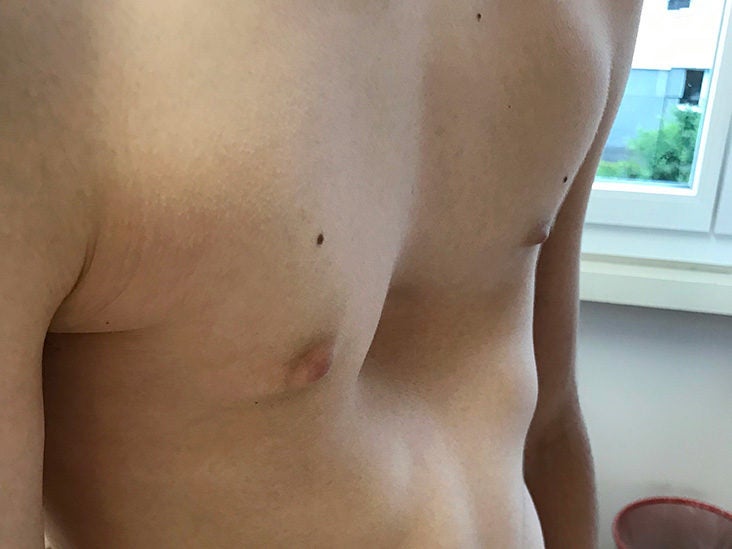
Pectus Excavatum Overview Symptoms Treatments And More
Push-ups help strengthen your upper pectoral muscles and chest wall.

. There can be anatomical changes that happen during pregnancy like the elevation of the diaphragm. Pectus excavatum affects about one in. Im increasingly finding it very very difficult to breathe.
Signs are usually cosmetic although severe cases may notice difficulties in breathing. To check for breathing problems related to pectus excavatum your child may have a breathing test done called a pulmonary function test PFT. Pectus excavatum also known as concave chest or funnel chest is a deformity of your childs chest wall.
The earliest reports of pectus excavatum described patients with trouble breathing. In 1594 Bauhinus wrote my father showed me a boy 7 years of age among the Nobles of Andalusia who was born with the sternum and ribs being bent back to the internal part of the chest and abdomen so that a large cavity appeared there. Clinicians noted exercise limitations that were improved by surgical treatment more than 70 years ago.
Pectus excavatum is associated with sleep-related breathing disorders in children. According to a 2015 study the most common problems pregnant females with pectus excavatum face are. Pectus excavatum PE is a condition where the breastbone in the chest is sunken inward causing breathing difficulties and in rare cases mild cardiac issues.
Studies have shown that pectus excavatum in babies can also cause respiratory infections. Shortness of breath especially while exercising Constant cough. The condition is not always noticeable at birth but is often apparent by the time a child is 2 to 3.
Pectus excavatum is a condition in which instead of being level with the ribs the breastbone sternum is sunken so that the middle of the chest looks caved in. The diaphragm is the centre of focus in meditation and yoga. When objective measurement of lung function was first employed little improvement was seen with the crude methods of measurement then available.
Get down on all fours with your hands slightly wider than your shoulders. HELP DOCTOR THOMAS SURVIVE THE MEDICAL BOARD TRYING TO TAKE HIS LICENSE BY DONATING TO THE CHANNEL. Pectus excavatum PECK-tuss ex-kuh-VAW-tum is a condition that causes a childs chest to look sunken or caved in It happens because of a defect in the tough connective tissue cartilage that holds the bony part of the ribs to the breastbone.
In some cases there is a slight dent in the chest that disappears in puberty. Surgery may also be done to improve the appearance of the chest. Diaphragmic breathing for pectus excavatum has a lot of benefits.
24 weeks and 3 days - but hes measuring quite big haha. As the ribcage is more rigid than normal it can make it difficult to completely breathe out expire. This information from Great Ormond Street Hospital GOSH is about pectus excavatum also known as funnel chest.
Also a common thing is sharp chest pain especially while. Its a boy He is sitting very low but obviously my womb has expanded a lot. The primary goal of surgery for pectus excavatum is to correct the chest deformity to improve a patients breathing and cardiac function.
Although no one has previously been. Pregnant with my first baby. Pectus excavatum occurs in a baby who is developing in the womb.
After birth the surgeons cant identify whether the baby has pectus excavatum or not. Surgery is generally advised if there are other health problems such as trouble breathing. Usually the ribs and sternum go outward at the front of the chest.
This breathing exercise will also give you a. The condition is also called sunken. Focus on elevating the anterior chest wall cavity.
Pectus excavatum is a congenital deformity of the chest wall that causes several ribs and the breastbone sternum to grow in an inward direction. With pectus excavatum the sternum goes inward to form a depression in the chest. Straighten your legs and arms.
Then slowly exhale and repeat. What Is Pectus Excavatum. The historical perspective.
Pectus excavatum a deformity of the sternum and ribs caused by an unbalanced costochondral hypertrophy. It helps to manage irritable bowel syndrome. Talk to your provider about treatment.
The condition can be mild or severe. The first recorded description of pectus excavatum was in a 7 years old boy from Spain. Miamis family soon realized her mother may also have the condition and was unaware until Miami was diagnosed.
Authors Hiroo Wada 1. A child with pectus excavatum usually has a depression in the center of the chest over the breastbone which may appear quite deep. Pectus excavatum occurs in one in 300-400 children with male prominence male-to-female ratio of 31.
Pectus excavatum can range from mild to severe. It can also develop in a baby after birth. Try to do ten repetitions of this in the morning and 10 in the evening.
After the age of 18 years the deformity. PE can often be hereditary. It may be minimal with only slight depression of the chest or it may be quite severe.
Pectus excavatum is an abnormal development of the rib cage in which the sternum breastbone grows inward resulting in a noticeable and sometimes severe indentation of the chest wall. The cartilage pushes the breastbone sternum inward. Slowly inhale deeply and keep the air inside your lungs for about ten seconds.
Camdens breathing and chest pains were worsening until the doctors at Childrens Memorial Hermann stepped in and got him the diagnosis and treatment he needed.

Pectus Excavatum Pectus Clinic
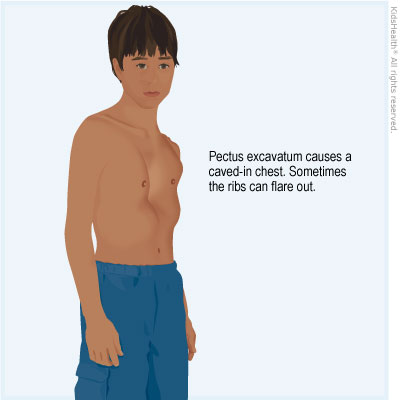
Chest Wall Disorder Pectus Excavatum For Parents Primary Children S Hospital
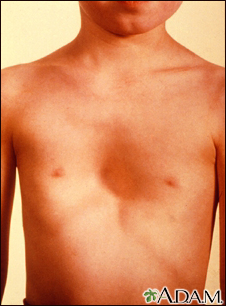
Pectus Excavatum Information Mount Sinai New York
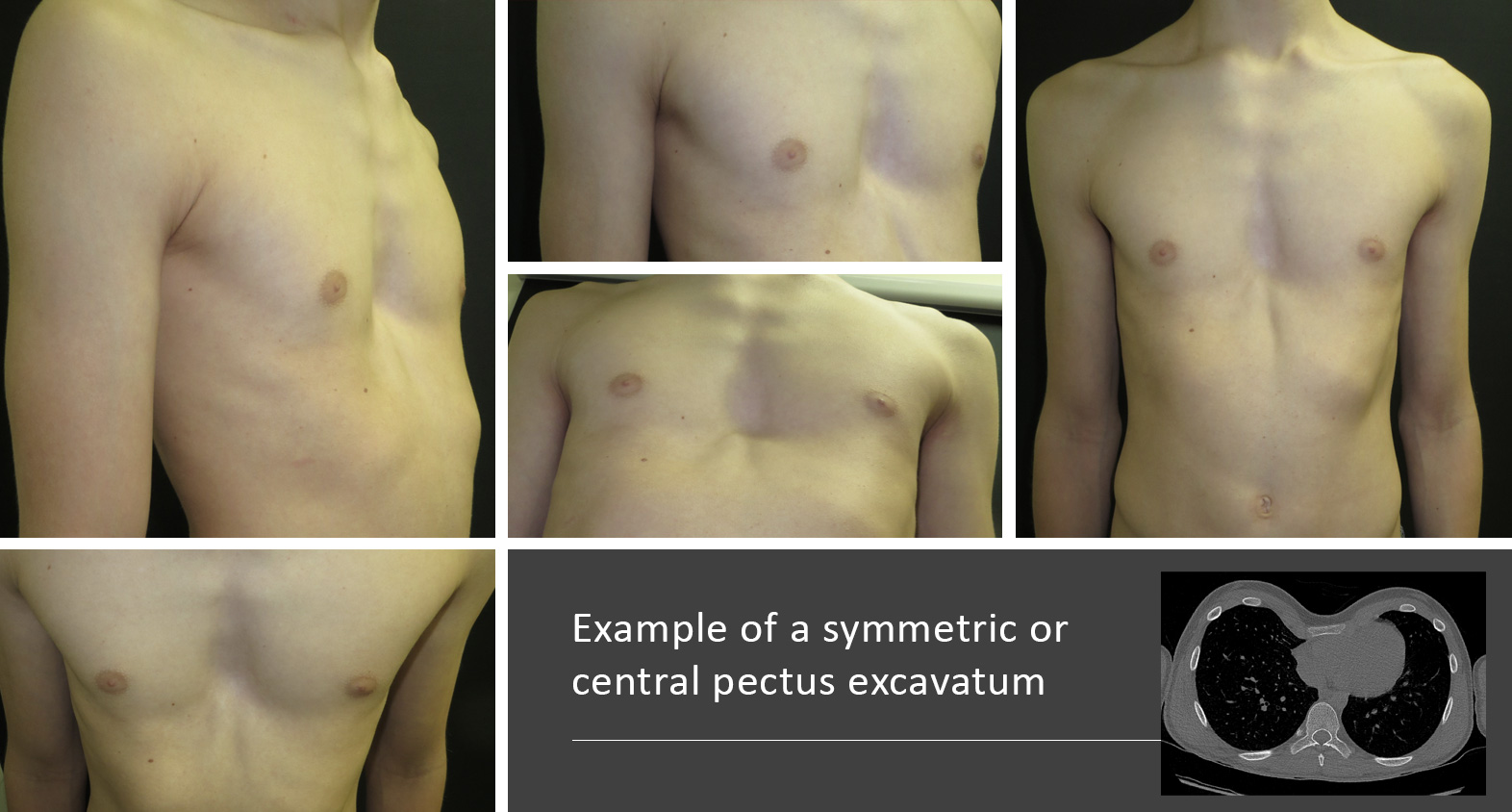
Pectus Excavatum Pectus Clinic

Pectus Excavatum Funnel Chest Asthma Lung Uk

Pectus Excavatum Chest Wall Stanford Children S Health

Does My Child Have Pectus Excavatum Aka Sunken Chest Kite Strings Mary Bridge Children S

Pectus Excavatum Chest Wall Deformities Child Heart Specialist
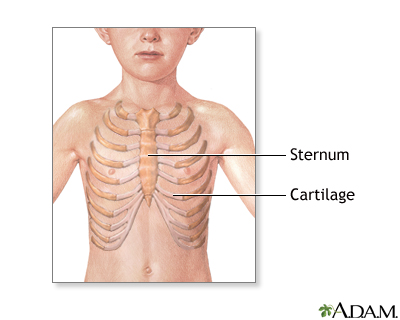
Pectus Excavatum Information Mount Sinai New York

History Of Pectus Excavatum Nuss Procedure Pectus Excavatum Treatment History

1 Pectus Excavatum Is Often Seen In Infants This 11 Month Old Child Download Scientific Diagram
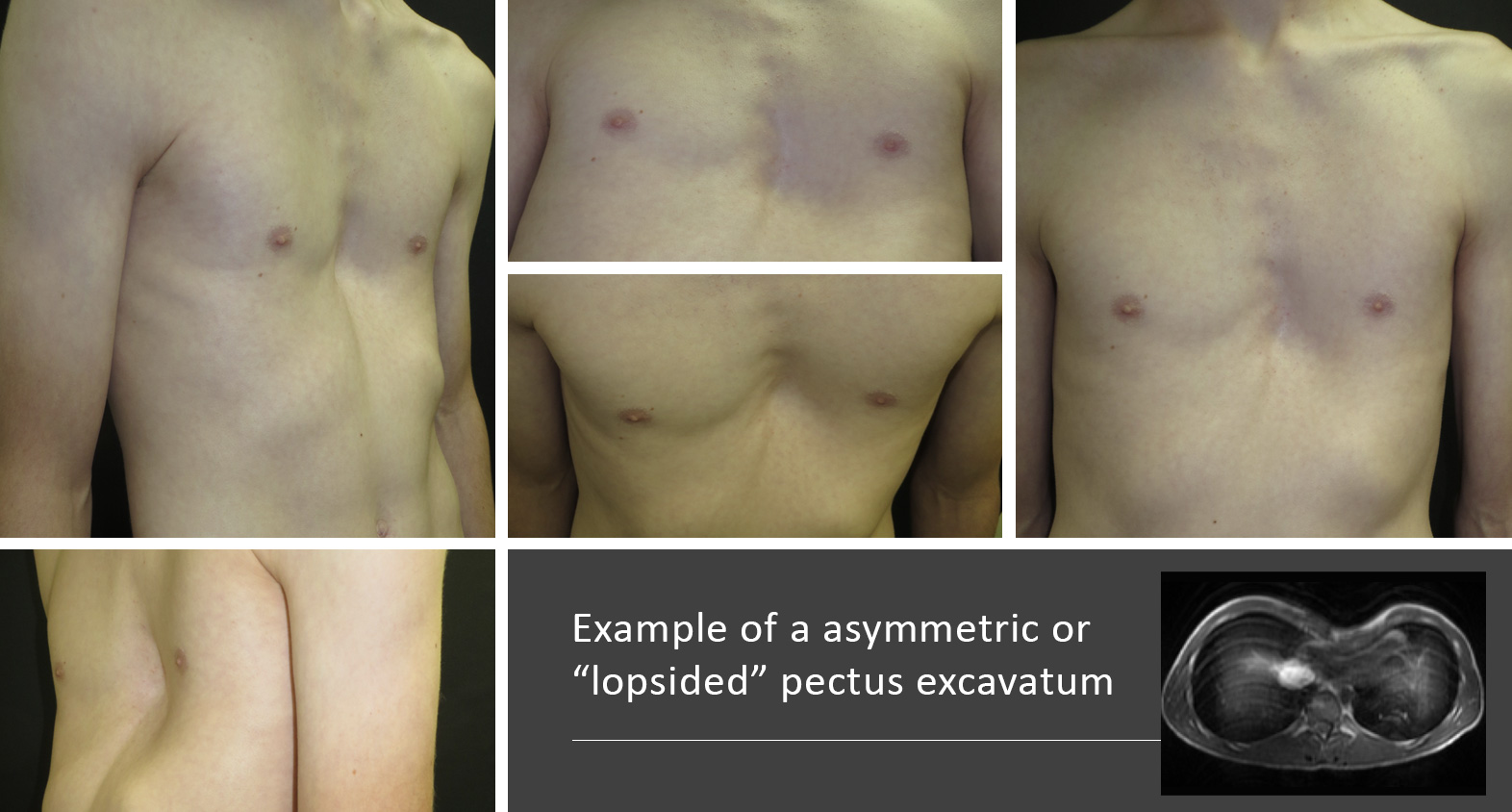
Pectus Excavatum Pectus Clinic

Help My Baby S Chest Is Caving In Pectus Excavatum Dr Paul Youtube

Pectus Excavatum Girl Teenager

Pectus Excavatum Case Histories

Pectus Excavatum Pectus Clinic


